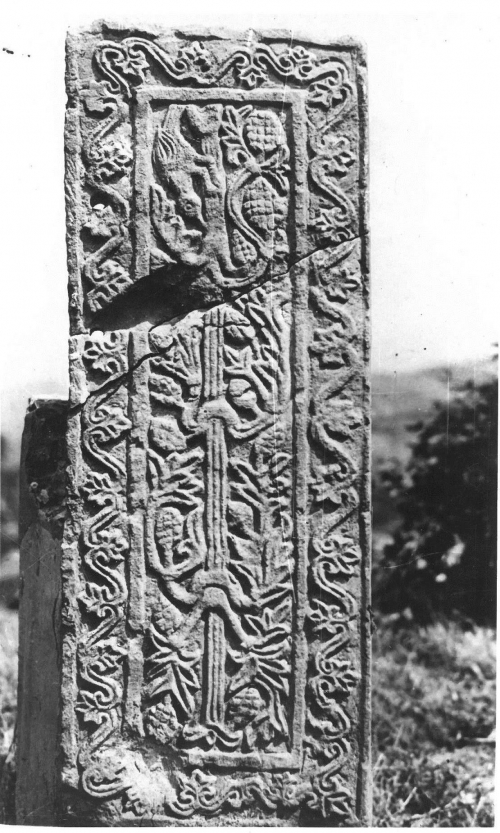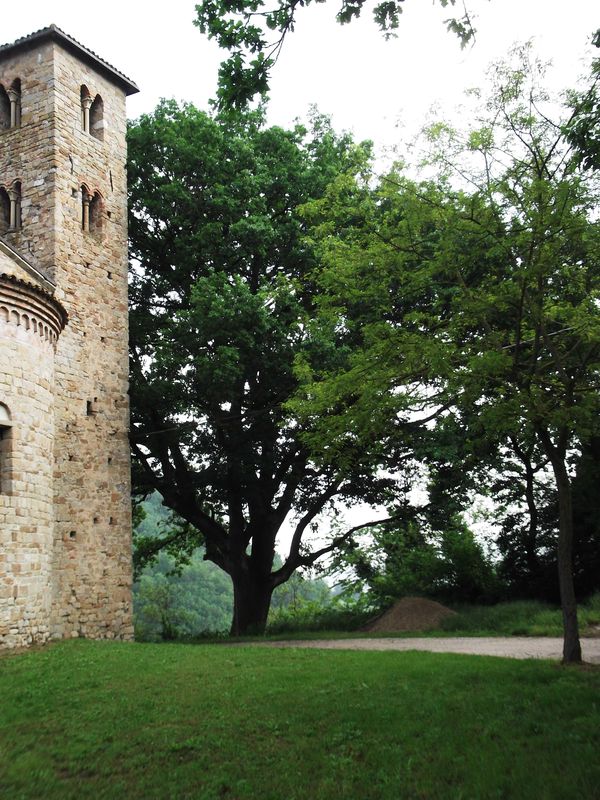Chiesa e Badia di Monte Armato
Nel 1129 compare l'abbazia “S. Marie de Monte Armati”, il cui abate Giovanni concorda con l'abate Guido di S. Stefano di Bologna “communiter pro dimidio deinceps habere” l' “ecclesiam S. Johannis de Valle de Lambro”.
Intorno al 1161 vediamo più volte comparire nelle carte imolesi l'abate Rainerio di Monte Armato: il 24 novembre del 1161 egli riceve da un certo Temperato, col consenso di Rodolfo vescovo di S. Cassiano (di Imola) e di “Imilda Malincaltii” (che vi doveva avere dei diritti) l' “hospitale S. Georgii” con tutti i suoi possessi. Lo stesso giorno l'abate ne affida la custodia all'ex possessore. Solo nell'anno seguente, il 22 febbraio 1162, però, anche i Canonici di S. Cassiano glielo cedono definitivamente, a quel che ne sappiamo. Ma i rapporti dell'abbazia di Monte Armato con la Chiesa imolese non finiscono qui: nel 1174 l'abate Ugo riceve in enfiteusi da Enrico vescovo di S. Cassiano e dai Canonici l' “hospitale Solustrae” che, a giudicare dal nome, doveva trovarsi sul torrente Sellustra. Infine nel 1197 all'abate di Monte Armato, in contesa con quello “de Trecentis”, viene assegnato l' “hospitale de Stenperato” dall'arbitro scelto dal papa Celestino e cioè “Ieremias archipresbiter plebis de Pasteno”. L'ospizio conteso ci pare che fosse quello di S. Giorgio, definito ora con il nome corrotto dell'antico possessore e custode, Temperato. Anche nel '200 compare l'abbazia di Monte Armato e pare che i suoi interessi economici arrivino parecchio ad est, ai confini col territorio imolese: infatti abbiamo notizia nel 1252 di una controversia fra l'abate del “conventus et monasterii S. Marie.
Curiosità: percorrendo l'ultimo tratto si può ammirare sulla destra un magnifico esemplare di Roverella inserito per le sue dimensioni nell' "Albo degli Alberi Monumentali della Regione Emilia-Romagna".
La transenna in selenite a finissime scaglie risalente al secolo XII della foto, qui sotto raffigurata, fu rinvenuta da Enrico Fantini (nipote di Luigi) tra le macerie dell'abbazia. Nel suo volume sugli antichi edifici della montagna bolognese (1971) Luigi Fantini annotò che il manufatto era allora in deposito presso il Museo d'Arte Industriale Davia Bargellini di Bologna.
EG
In 1129 appears the abbey "St. Marie de Monte Armati", whose abbot Giovanni agrees with the abbot Guido of S. Stefano in Bologna "communiter pro dimidio deinceps habere "l '" ecclesiam S. Johannis de Valle de Lambro. "
Around 1161 we see several times to appear in the Imola's maps Rainerio, the abbot of Monte Armato: the 24 November 1161 he receives from a Temperato, with the consent of Rodolfo Bishop of S. Cassiano (Imola) and of "Imilda Malincaltii" (who had to have the rights) the "hospitale S. Georgii" with all his possessions. On the same day the abbot awarded custody to the former owner. Only in the following year, February 22, 1162, however, even the Canons of St. Cassian give it to him definitely, for all we know. But the relations beetween Monte Armato's abbey and Imola's Church does not end there: in 1174 the abbot Hugo receives in perpetual lease by Henry bishop of S. Cassiano and by the Canons the "hospitale Solustrae" which, judging by the name, was to be on stream Sellustra. Finally in 1197 to the abbot of Monte Armato, contending with the abbot "de Trecentis", is assigned the '' hospitale de Stenperato" by the referee chosen by Pope Celestine named "Ieremias archipresbiter plebis de Pasteno". The disputed hospice seems to us that it was that of S. Giorgio, defined now with the corrupt name of the ancient owner and keeper, Temperato. Even in the '200 appears the abbey of Monte Armato and it seems that its economics interests arrives a lot to the east, on the border with the Imola's territory: in fact we have news in 1252 about a dispute between the abbot of "conventus et monasterii St. Marie".
Several times you see the "monastery of Monte Armato" as conterminous, both in estimi of 1315 than in 1385 related to the curia of Monte Armato.
Curiosity : along the last stretch you can see on the right , a magnificent specimen of oaks inserted for its size in the ' ' Register of Monumental Trees of the Emilia - Romagna Region "
The fine-cut selenite hurdle dating back to the 12th century of the photo was found by Enrico Fantini (Luigi's nephew) among the ruins of the abbey. In his book on the ancient buildings of the Bolognese mountain (1971) Luigi Fantini noted that the artefact was then in storage at the Davia Bargellini Museum of Industrial Art in Bologna.




